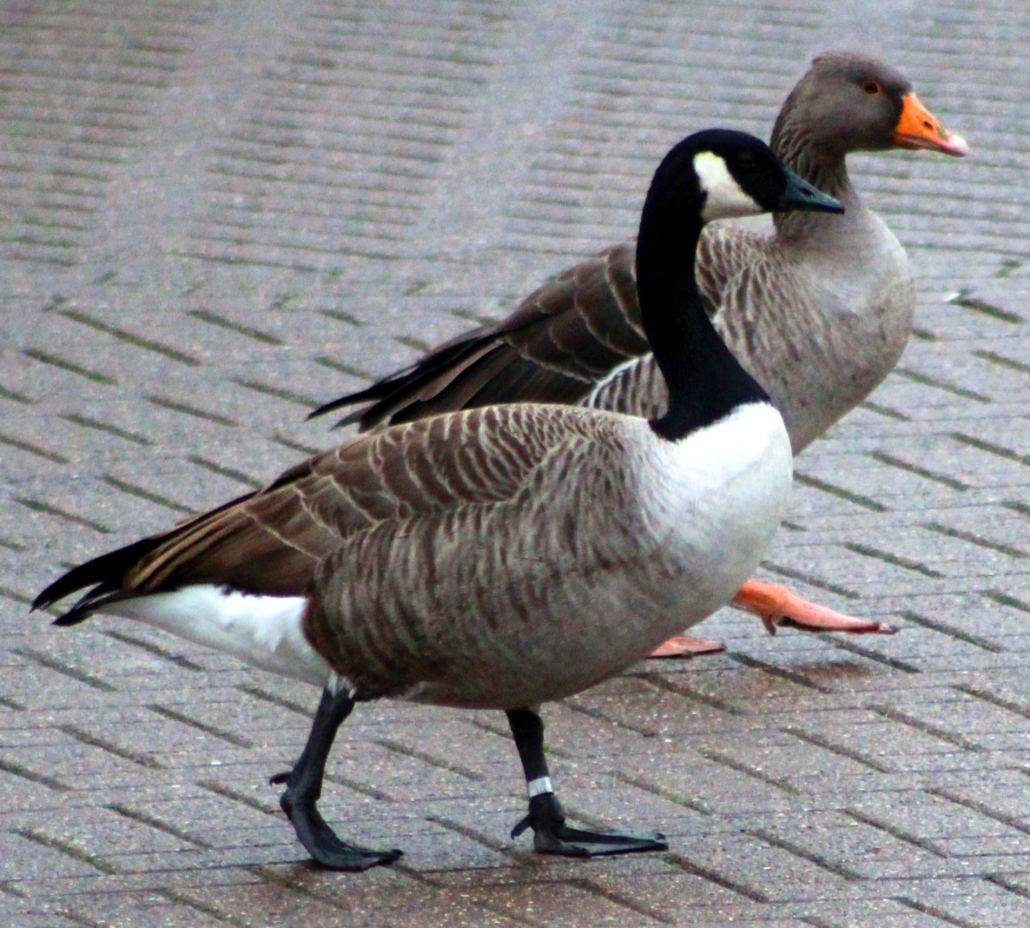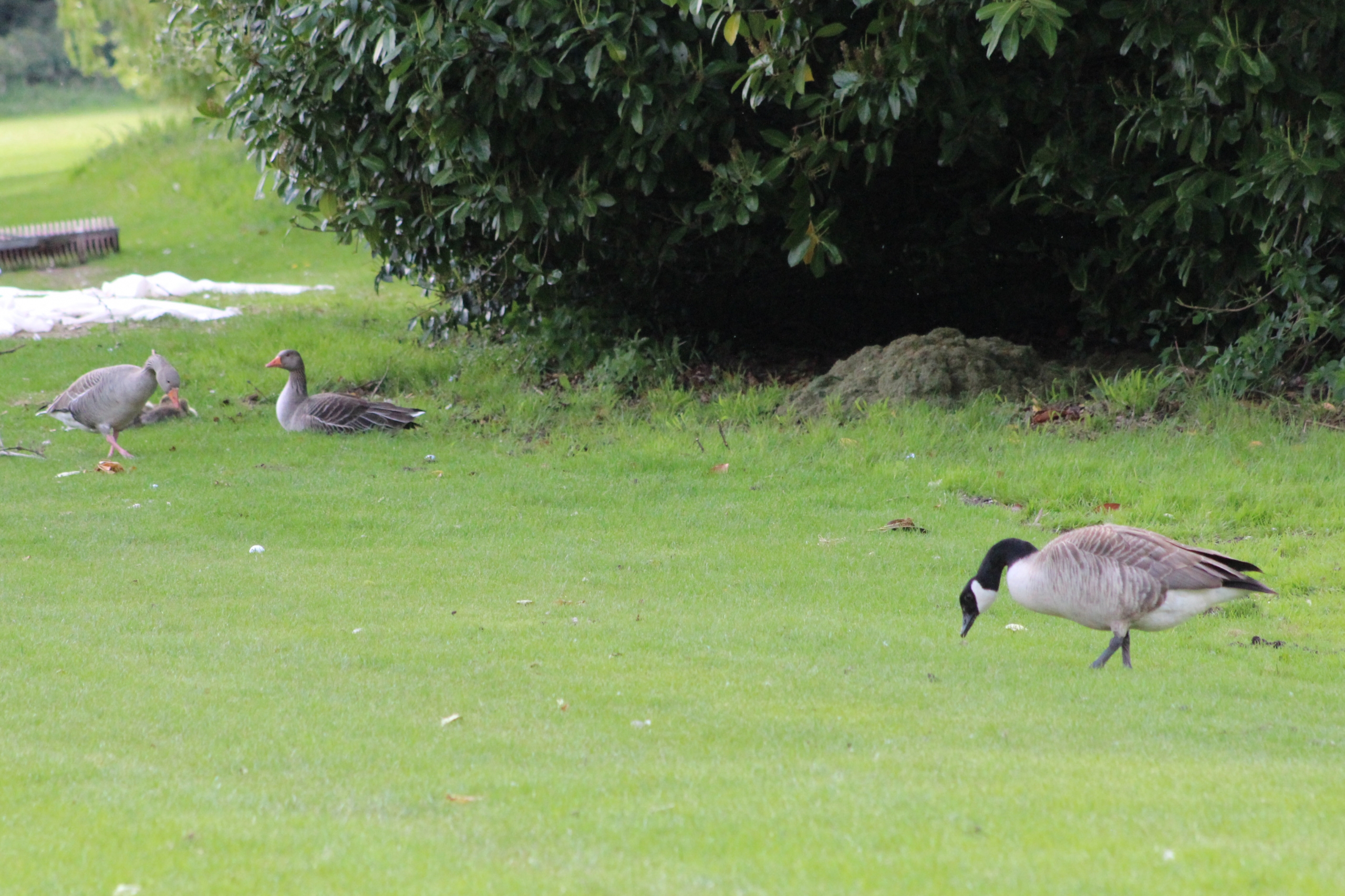We work hard to protect the Colne Valley for both wildlife and people – below is the story of some of the geese resident in the Colne Valley written by Mary Pearson one of our amazing volunteers.
Wherever water meets a grassy bank in the park, prepare to meet a goose. Chances are it will be one or the other of our most numerous species, the Canada goose (Branta canadensis) or the greylag (Anser anser). These two gregarious species have similar habitat requirements and are readily seen flocking together, literally.
In echoes of the ugly duckling story, it’s not unusual to see an adopted gosling amongst the young of the other species. This is usually the result of brood amalgamation, the common waterfowl habit of laying eggs in one another’s nests. Fostered individuals will often stick with their adopted flock for life. This may well confer a survival advantage long term. Or maybe geese are just like that.
Many people assume the Canada goose is a recent arrival, marauding uninvited on the greylag’s home turf. The truth is a little more complicated. Both these geese are, to some extent, introduced species. Although greylags are native to Britain, by the 1700s they were, for all intents and purposes, gone from the wild, their habitats lost to wetland drainage schemes and their numbers culled by hunting. They were readily found, however, on the table at Michaelmas. As its ancient yet familiar appearance suggests, the greylag is the ancestor of Anser anser domesticus, the European domestic goose.
Around the same time wild greylag populations were declining, Canada geese arrived, imported in the 17th century for the royal wildfowl collection. Escape was inevitable, and the Canada geese we see now, more 300 years later, are mostly feral descendants of ornamental birds like these.
Similarly, modern greylag populations in much of the UK are the result of small-scale reintroduction programmes begun in the 1930s at a handful of aristocratic estates. Although brought back primarily as game birds, the British greylags had other ideas and are now resident throughout the country. Although numerous – neck and neck with the Canada goose, so to speak, at around 50,000 breeding pairs – greylags remain on the conservation amber list due to their drastic historical decline.
So what can we do to help these geese thrive now? Our work protecting and conserving riparian and wetland habitats in the park is really important to all the wildfowl and other species who make it their home. You’re welcome to help us. It all starts with a visit. See you soon!
Click here, if you’d like to sign up as one of our volunteer River Rangers.





